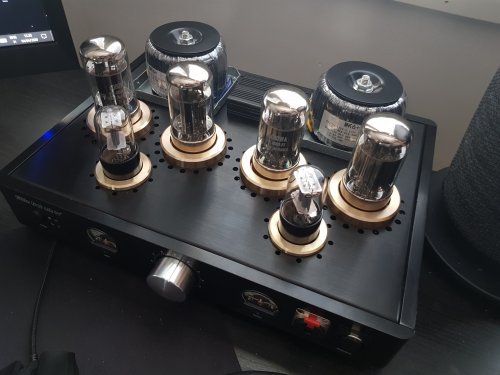ozaudios
Head-Fier
- Joined
- Jun 1, 2013
- Posts
- 59
- Likes
- 12
Hi,
I need some advice. Inow have the 8 x 330 Ohm resistors for the Little Dot MK VI+. I have removed the base plate, the volume knob and nut and washer, and removed 8 Philips Head screws from the circuit board. But the circuit board is not wanting to move. It seems to be still stuck down in the middle section, right beside the burnt resistor. Have I gone blind and missed a couple of screws? Is there something else I need to do? Do I need to remove the transformer covers?
I hope one of you people who have already disassembled a Little Dot MK VI+ can offer me some advice, and help me to get the circuit board out of the chassis. Thanks.
I need some advice. Inow have the 8 x 330 Ohm resistors for the Little Dot MK VI+. I have removed the base plate, the volume knob and nut and washer, and removed 8 Philips Head screws from the circuit board. But the circuit board is not wanting to move. It seems to be still stuck down in the middle section, right beside the burnt resistor. Have I gone blind and missed a couple of screws? Is there something else I need to do? Do I need to remove the transformer covers?
I hope one of you people who have already disassembled a Little Dot MK VI+ can offer me some advice, and help me to get the circuit board out of the chassis. Thanks.






















